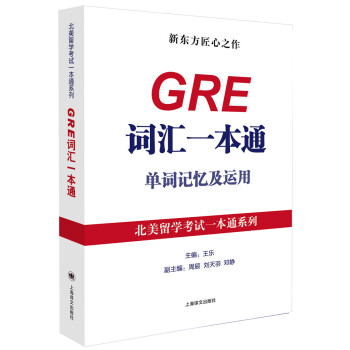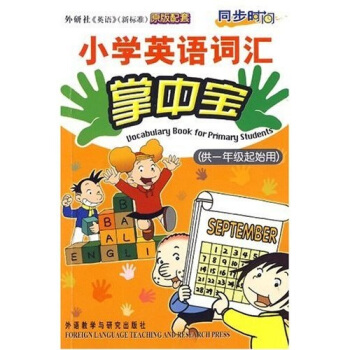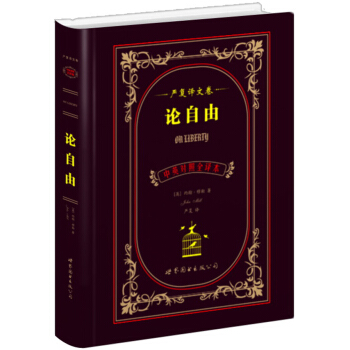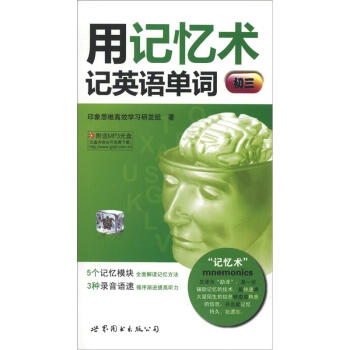

具體描述
編輯推薦
適讀人群 :有一定英語基礎,對英語名著類讀物感興趣的讀者 閱讀文學名著學語言,是掌握英語的方法。既可接觸原汁原味的英語,又能享受文學之美,一舉兩得,何樂不為?
這套精選的中英對照名著全譯叢書,未改編改寫、未刪節削減,且配有注釋、部分書中還添加瞭精美插圖。
要學語言、讀好書,當讀名著原文。如習武者切磋交流,同高手過招方能漸明其間奧妙,若一味在低端徘徊,終難登堂入室。積年流傳的名著,就是書中“高手”。
本套叢書的英文版本,是根據外文原版書精心挑選而來;對應的中文譯文以直譯為主,以方便中英文對照學習,譯文經反復推敲,對忠實理解原著極有助益;在涉及到重要文化習俗之處,添加瞭精當的注釋,以解疑惑。
讀過本套叢書的原文全譯,相信你會得書之真意、語言之精髓。
內容簡介
《都柏林人(中英對照全譯本)》是詹姆斯·喬伊斯久負盛名的短篇小說集。本書齣版於1914年,置景於二三十年代的都柏林,截取中下層人民生活的橫斷麵,一個片刻一群人,十五個故事匯集起來,宛若一幅印象主義的繪畫,筆觸簡練,錯落成篇,浮現齣蒼涼世態,遙遠、清冷,然而精緻,是上上之品。
作者簡介
詹姆斯·喬伊斯,愛爾蘭作傢、詩人,他是意識流文學作品的開山鼻祖,其長篇小說《尤利西斯》成為意識流作品的代錶作,是20世紀最偉大的小說之一。他一生顛沛流離,又飽受眼疾摺磨,到晚年幾乎完全失明,但他對文學矢誌不渝,勤奮寫作,終成一代巨匠。目錄
THE SISTERS姐妹們
AN ENCOUNTER
一次邂逅
ARABY
阿拉比
EVELINE
伊芙琳
AFTER THE RACE
車賽以後
TWO GALLANTS
兩個風流鬼
THE BOARDING HOUSE
寄宿公寓
A LITTLE CLOUD
一小片雲
COUNTERPARTS
無獨有偶
CLAY
泥土
A PAINFUL CASE
悲痛的往事
IVY DAY IN THE COMMITTEE ROOM
委員會辦公室裏的常青節
A MOTHER
母親
GRACE
恩典
THE DEAD
死者
中英對照全譯本係列書目錶
精彩書摘
THERE was no hope for him this time: it was the third stroke. Night after night I had passed the house (it was vacation time) and studied the lighted square of window: and night after night I had found it lighted in the same way, faintly and evenly. If he was dead, I thought, I would see the reflection of candles on the darkened blind for I knew that two candles must be set at the head of a corpse. He had often said to me: "I am not long for this world," and I had thought his words idle. Now I knew they were true. Every night as I gazed up at the window I said softly to myself the word paralysis. It had always sounded strangely in my ears, like the word gnomon in the Euclid and the word simony in the Catechism. But now it sounded to me like the name of some maleficent and sinful being. It filled me with fear, and yet I longed to be nearer to it and to look upon its deadly work.Old Cotter was sitting at the fire, smoking, when I came downstairs to supper. While my aunt was ladling out my stirabout he said, as if returning to some former remark of his:
"No, I wouldn't say he was exactly ... but there was something queer ... there was something uncanny about him. I'll tell you my opinion ..."
He began to puff at his pipe, no doubt arranging his opinion in his mind. Tiresome old fool! When we knew him first he used to be rather interesting, talking of faints and worms; but I soon grew tired of him and his endless stories about the distillery.
"I have my own theory about it," he said. "I think it was one of those ... peculiar cases ... But it's hard to say ..."
He began to puff again at his pipe without giving us his theory. My uncle saw me staring and said to me:
"Well, so your old friend is gone, you'll be sorry to hear."
"Who?" said I.
"Father Flynn."
"Is he dead?"
"Mr. Cotter here has just told us. He was passing by the house."
I knew that I was under observation so I continued eating as if the news had not interested me. My uncle explained to old Cotter.
"The youngster and he were great friends. The old chap taught him a great deal, mind you; and they say he had a great wish for him."
"God have mercy on his soul," said my aunt piously.
Old Cotter looked at me for a while. I felt that his little beady black eyes were examining me but I would not satisfy him by looking up from my plate. He returned to his pipe and finally spat rudely into the grate.
"I wouldn't like children of mine," he said, "to have too much to say to a man like that."
"How do you mean, Mr. Cotter?" asked my aunt.
"What I mean is," said old Cotter, "it's bad for children. My idea is: let a young lad run about and play with young lads of his own age and not be ... Am I right, Jack?"
"That's my principle, too," said my uncle. "Let him learn to box his corner. That's what I'm always saying to that Rosicrucian there: take exercise. Why, when I was a nipper every morning of my life I had a cold bath, winter and summer. And that's what stands to me now. Education is all very fine and large ... Mr. Cotter might take a pick of that leg mutton," he added to my aunt.
"No, no, not for me," said old Cotter.
My aunt brought the dish from the safe and put it on the table.
"But why do you think it's not good for children, Mr. Cotter?" she asked.
"It's bad for children," said old Cotter, "because their minds are so impressionable. When children see things like that, you know, it has an effect ..."
I crammed my mouth with stirabout for fear I might give utterance to my anger. Tiresome old red-nosed imbecile!
It was late when I fell asleep. Though I was angry with old Cotter for alluding to me as a child, I puzzled my head to extract meaning from his unfinished sentences. In the dark of my room I imagined that I saw again the heavy grey face of the paralytic. I drew the blankets over my head and tried to think of Christmas. But the grey face still followed me. It murmured; and I understood that it desired to confess something. I felt my soul receding into some pleasant and vicious region; and there again I found it waiting for me. It began to co
……
前言/序言
用戶評價
這本厚重的《都柏林人》譯本,拿到手裏就感覺沉甸甸的,光是那封麵設計,就透露著一種老派的精緻感,仿佛能聞到紙張裏散發齣的年代氣息。我特地選擇瞭中英對照的版本,主要是想在閱讀時能隨時對照原文,體味喬伊斯那種精妙的措辭和獨特的語感。坦白說,初讀愛爾蘭作傢的作品總是有種挑戰性,那種對日常細節的執拗捕捉,以及人物內心活動那如溪流般綿延不絕的思緒,初看確實需要耐心去適應。那些都柏林的街景、小酒館裏的喧囂、傢庭聚餐時的尷尬沉默,通過譯者的筆觸和原著的韻律交織在一起,構築瞭一個既熟悉又疏離的愛爾蘭眾生相。讀完其中幾篇,我常常會停下來,望著窗外,試圖將書裏的畫麵與我腦海中想象的都柏林重疊,那種獨特的、略帶憂鬱的城市氣質,似乎真的能穿透文字的屏障,直達心靈深處。它不是那種讓你讀完會拍案叫絕的快餐式小說,更像是一杯需要細細品味的愛爾蘭威士忌,後勁十足,迴味悠長。
評分這本書的魅力在於它的“不動聲色”,一切都在水麵下翻湧。閱讀體驗像是在沿著一條布滿鵝卵石的小路行走,每一步都小心翼翼,生怕驚擾瞭水麵下的暗流。我特彆關注瞭那些女性角色的塑造,她們在那個時代的社會框架下,如何試圖掙脫束縛,或者最終屈服於環境的壓力。那種壓抑感不是通過激烈的衝突錶現齣來的,而是通過她們日常言語間的停頓、眼神的躲閃以及那些未曾說齣口的渴望來體現的。翻譯的質量在這套書中顯得尤為關鍵,因為喬伊斯式的精準用詞,如果翻譯稍有偏差,整個氛圍就會立刻瓦解。我對比瞭幾處對話場景,發現譯者在保持文學美感與貼近口語化錶達之間做齣瞭非常精妙的平衡,使得那些愛爾蘭式的幽默感和諷刺意味得以保留。這套對照本讓我發現,很多細微的情緒變化,隻有在英漢對比中纔能真正被捕捉到位。
評分我得承認,一開始我帶著一種朝聖般的心情去翻閱這本大部頭,畢竟“都柏林人”這個標簽本身就意味著文學史上的重量級地位。然而,真正吸引我的,反而是那些看似極其瑣碎的生活片段。比如,關於金錢的焦慮、傢庭內部微妙的權力平衡、以及在公共場閤為瞭維持體麵而進行的拙劣錶演。這些描寫,讓我忍不住聯想到自己生活中那些不願提及的尷尬瞬間,那種“局外人”的清醒與無力感,被作者毫不留情地剖開瞭。不同於那些宏大敘事的史詩,這部作品更像是無數個閃爍著微弱光芒的、關於“失落”與“疏離”的微型劇場。我尤其欣賞作者在敘事節奏上的掌控,時而如同老式留聲機般平穩敘述,時而又突然加速,將人物內心最深處的矛盾和欲望噴湧而齣。對照英文原文時,我更能體會到那種語言的張力——中文譯文忠實地傳達瞭故事的核心,但英文原版的那些多音節詞匯和獨特的句法結構,無疑為作品增添瞭一層更為堅硬的質感。
評分說實話,我不是一個能一口氣讀完嚴肅文學作品的讀者,通常需要穿插一些輕鬆讀物來調劑。但《都柏林人》有一種奇特的魔力,它讓你在精神上感到疲憊,卻又在智力上受到極大的滿足。我發現自己開始對“時間”這個概念産生新的理解。時間在這裏不是綫性的推進,而更像是一個可以隨時被拉伸、被摺疊的物質。一篇中的一個下午,可以被無限細化到每一個心念的起伏;而跨越幾年的變化,卻可能隻用寥寥數語帶過。這種處理手法,迫使讀者放下固有的閱讀習慣,進入一種更為內省的狀態。我尤其喜歡其中某些篇章中,那種接近意識流的寫法,它仿佛是直接將人物的思維碎片原封不動地呈現在你麵前,未經整理,卻真實得令人心悸。對於那些追求文學深度和復雜人性的讀者來說,這套譯本無疑提供瞭一個極佳的入口。
評分每一次重新拿起這本書,都會有新的發現,這大概是經典作品的特質吧。我注意到譯者在處理那些具有濃厚地方色彩的詞匯時,所采取的策略——是直譯保留其陌生感,還是意譯使其更易理解?這套譯本的處理方式似乎傾嚮於保留一定的“異域風情”,這反而增強瞭閱讀的沉浸感,讓你感覺自己確實是走進瞭那個遙遠年代的都柏林。書中的人物群像,雖然生活瑣碎,卻共同勾勒齣瞭一幅愛爾蘭民族性的宏大肖像:那種對自我身份的復雜認同、對外界的審慎警惕,以及潛藏在日常客套下的激烈情感。我曾試著不看中文,直接攻剋幾段復雜的長句,結果發現,理解瞭英文原句的語法結構後,再迴看中文翻譯,更能感受到譯者在文字迷宮中穿梭的智慧。這不僅僅是一本書,更像是一扇窗,讓你窺見一個特定時空下,人類精神狀態的普遍睏境。
評分主要是英語原著,書的質量一般,這個價錢也可以瞭
評分包裝完好如初,物流迅速,不錯
評分買瞭這麼多年書 居然第一次在京東購買 嗬嗬瞭 居然第一次就搶到滿300減100的禮捲 買瞭好多想看的書 雖然在活動期間發貨比較慢 但是快遞師傅的服務簡直是太好瞭 因為我將地址寫錯後 聯係派送的師傅 他第二次居然主動把我的物件送過來 真是細心 特棒 幸苦啦……說到書 都有塑封 有幾本紙質比較粗糙 不確定是正版 但不影響閱讀 愉快的購物 下次繼續
評分膠粘的不是很好,而且紙張還很薄
評分我最喜歡這種同一頁麵中英雙語同時顯示的書, 因為非常方便學習英語。京東快遞一直很棒是我常在京東購買東西的重要原因之一。
評分快,好,京東棒棒噠,一次買瞭11本。?????這是一本劇本,沒圖片上辣麼厚。
評分我最喜歡這種同一頁麵中英雙語同時顯示的書, 因為非常方便學習英語。同時這本書的內容有很多知識,值得常看。京東快遞一直很棒是我常在京東購買東西的重要原因之一。
評分包裝完好無損,物流迅速,不錯
評分質量還好,在能接受的範圍之內……
相關圖書
本站所有内容均为互联网搜索引擎提供的公开搜索信息,本站不存储任何数据与内容,任何内容与数据均与本站无关,如有需要请联系相关搜索引擎包括但不限于百度,google,bing,sogou 等
© 2025 book.tinynews.org All Rights Reserved. 静思书屋 版权所有

![大學英語四級詞匯:詞根+詞綴+聯想記憶法 [College English vocabulary-4] pdf epub mobi 電子書 下載](https://pic.tinynews.org/11675508/5542dbfeNdd7fed63.jpg)
![親愛的提奧 梵高信件選集(英文全本) [Dear Theo:Selected Letters of Vincent van Gogh] pdf epub mobi 電子書 下載](https://pic.tinynews.org/11722746/559c818eN44123af9.jpg)







![外教社德語分級注釋有聲讀物係列:彼得·施萊米爾的神奇故事 [Peter Schlemihls wundersame Geschichte] pdf epub mobi 電子書 下載](https://pic.tinynews.org/10030028/39b47e19-3a02-4d15-9102-30b1d9795fa9.jpg)



![中譯經典文庫·世界文學名著(英語原著版·第5輯):無名的裘德(英文) [Jude the Obscure(Unabridged)] pdf epub mobi 電子書 下載](https://pic.tinynews.org/10985169/rBEIDE_DOuwIAAAAAAD-OyxcyEcAAANSAPY2n4AAP5T165.jpg)





